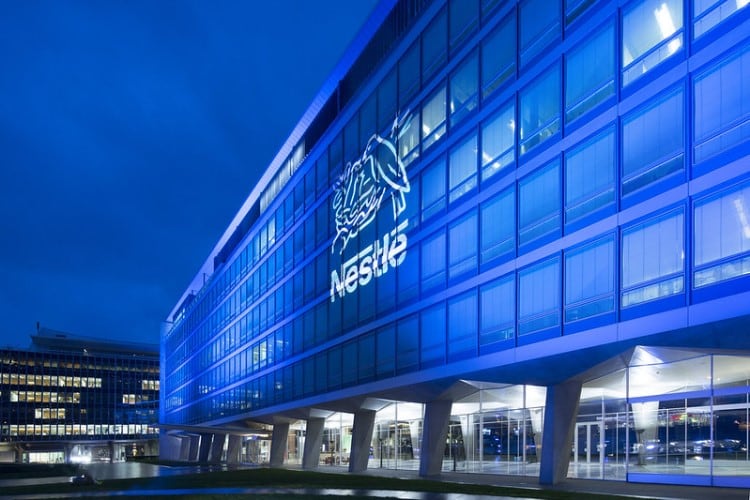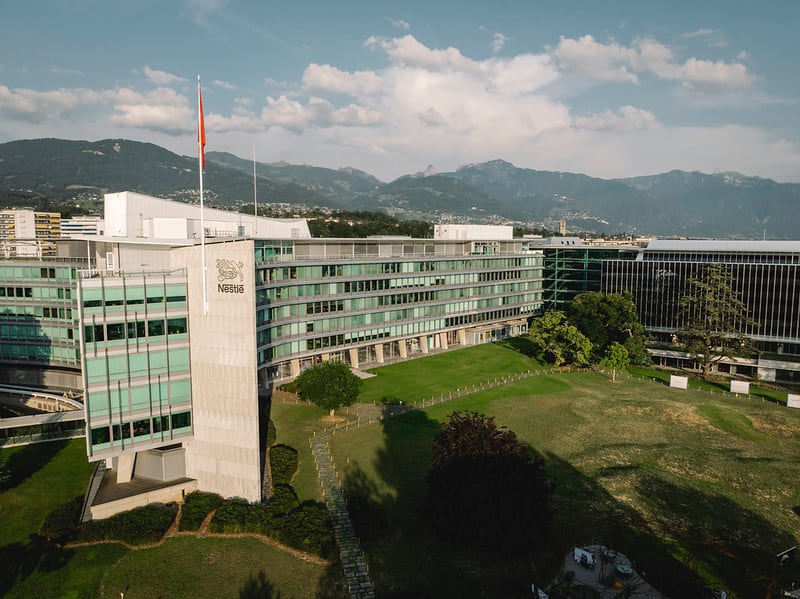As the world’s largest food group, Nestlé plans well ahead for the potential impacts of climate change on its value chain.
The company has carried out a resilience analysis with a 10-year scope to determine how well its sustainability strategy would cushion the firm against financial losses arising from increased costs or missed growth opportunities due to climate change.
Besides assessing global warming risks, the analysis has also helped the business to identify value chain opportunities – including consumer trends and new product development routes.
So how costly could climate change be for Nestlé depending on the rate of global warming – and what opportunities arise from the climate emergency for the food major?
The risks
According to data released in its latest non-financial statement, Nestlé has identified a range of climate transition risks that could cost the firm up to CHF 11 billion depending on the rate of global warming (e.g. whether temperatures rise by 1.5°C – so-called low-emissions scenario – or increase by 2°C to 3°C).
The anticipated financial impacts of these risks are rated ‘low’ (up to CHF 3 billion), ‘medium’ (CHF 3 billion and CHF 7 billion) and ‘high’ (CHF 7 billion to CHF 11 billion).
All estimates are hypothetical scenarios, Nestlé says, and do not represent forecasts of expected risk and outcomes. But the data highlights the key challenges climate change poses to the global food group, and the potential financial magnitude relative to them.
Nestlé has grouped the risks under policy, market and technology, with each group impacting a distinct part of its value chain.
Policy (risks to operations and raw materials) are: increase in raw materials costs; restrictions in land use; increase in energy costs’ increase of packaging materials costs; increased cost of recycled packaging due to supply constraints.
Market (risks to brands and portfolio) includes loss of revenue and/or missed growth opportunities.
Technology (risks to operations) involves asset write-downs, investments in low-emission technology to meet market regulation.
Policy-related risks – the largest group, involving raw materials and packaging – are associated with the highest potential costs. Here, if temperatures reach +1.5°C, Nestlé anticipates ‘high’ financial effects – that is, between CHF 7 billion to CHF 11 billion. If temperatures rise in the range of 2°C to 3°C, the financial effects would be ‘medium’ – i. e. between CHF 3 billion and CHF 7 billion.
For its brands and portfolio, the low-emissions scenario has a ‘medium’ anticipated financial impact – and the intermediate emissions scenario is rated ‘low’, meaning it would ‘only’ cost the company up to CHF 3 billion.
The company’s technology-related risks – such as asset-write-downs and investments to meet market regulation – have ‘low’ anticipated financial effects under both the low-emissions and the intermediate emissions scenarios.
“By implementing the Net Zero Roadmap, Nestlé is already addressing a significant part of the transition risks identified that it could potentially face during the decade following the assessment, resulting in a net reduction of its exposure,” the company said.
“Nestlé continues to review opportunities to reduce its risk exposure levels further and address upside potential of society’s transition to a low-carbon economy.”
How is Nestlé progressing against its key climate mitigation targets?
| Target | Progress in 2024 |
|---|---|
| Aim to source 100% renewable electricity in manufacturing sites by 2025 | 95.3% achieved |
| Aim for 20% of key ingredients to be sourced from farmers adopting regenerative agriculture practices by 2025 and 50% by 2030 | 21.3% achieved |
| Virgin plastic reduction by one-third by 2025 | 21.3% reduction achieved |
The opportunities
Besides gauging how costly the impacts of climate change would be on its value chain, Nestlé is also using its resilience analysis to become a leaner and more innovative food business.
When it comes to NPD and consumer trends, future opportunities include:
Growing consumer demand for – and increased revenue from – low-carbon products
Nestlé expects sustainability to be increasingly front-of-mind for consumers – and that would mean greater focus from the company on products that are environmentally sustainable.
This suggests a growing focus on improving plant-based food formulations – with the company seeing an opportunity for ‘continually upgrading its plant-based offerings in terms of taste, texture, flavor and nutrition’.
Relative to this, Nestlé also anticipates ‘increasing revenues resulting from more demand for low-emission products and services’.
In recent years, Nestlé has grown its coffee creamer range to include plant-based Coffee Mate and Natural Bliss ranges; launched a tuna alternative and a vegan burger range; and introduced a dairy alternative to its Carnation condensed milk brand.
Plant-based dairy innovation
In a bid to reduce the emissions impact of dairy production and ingredients sourcing, CPG majors such as Danone and Bel Group have been investing in anything from plant-based ingredient innovation to novel technologies like precision fermentation.
Precision fermentation is leveraged by foodtech start-ups to produce milk proteins without the cow. This is done by programming microbes such as yeasts to produce whey or caseins that are genetically-identical to cow-derived proteins.
These ingredients are then used to make ‘non-animal’ products such as cheese – with the key here being not just a lower-carbon footprint but also no compromise on taste, as the fermentation-derived proteins lend the same functional properties to dairy alternatives (think stretchy mozzarella) as do traditional milk proteins.
But barriers, from regulation to cost, have impacted this emerging food trend globally – and Nestlé has taken notice.
Thus, the food major has specifically identified plant-based products as an area of R&D focus – stating it would leverage ‘its expertise in plant proteins to expand its dairy-alternative offerings’.
Low-carbon formulations
The third major future opportunity is to do with reformulation, with Nestlé stating it is ‘constantly assessing opportunities to reduce its products’ carbon footprint through changing recipes and by using alternative ingredients’.
Dairy ingredients form the largest part of scope 3 emissions for Nestlé. The company most recently launched a hybrid – combining dairy and plant-based proteins – powdered milk product for children in Vietnam.
Similar innovations across many food and beverage categories are poised emerge in the coming years.
The full list of ‘future opportunities’ identified by Nestlé within the company’s non-financial statement (environmental disclosures and resilience analysis) follows below.
- Increasing the resilience of its supply chain through climate-smart agriculture practices.
- Reducing direct costs from lower-emission sources of energy.
- Limiting exposure to regulatory changes and increased operation costs due to carbon prices via reductions in its emissions.
- Increasing revenues resulting from more demand for low-emission products and services.
- Growing consumer demand for low-carbon products such as plant-based foods and drinks.
- Continually upgrading its plant-based offerings in terms of taste, texture, flavor and nutrition.
- Leveraging its expertise in plant proteins to expand its dairy-alternative offerings.
- Constantly assessing opportunities to reduce its products’ carbon footprint, through changing recipes and by using alternative ingredients.


